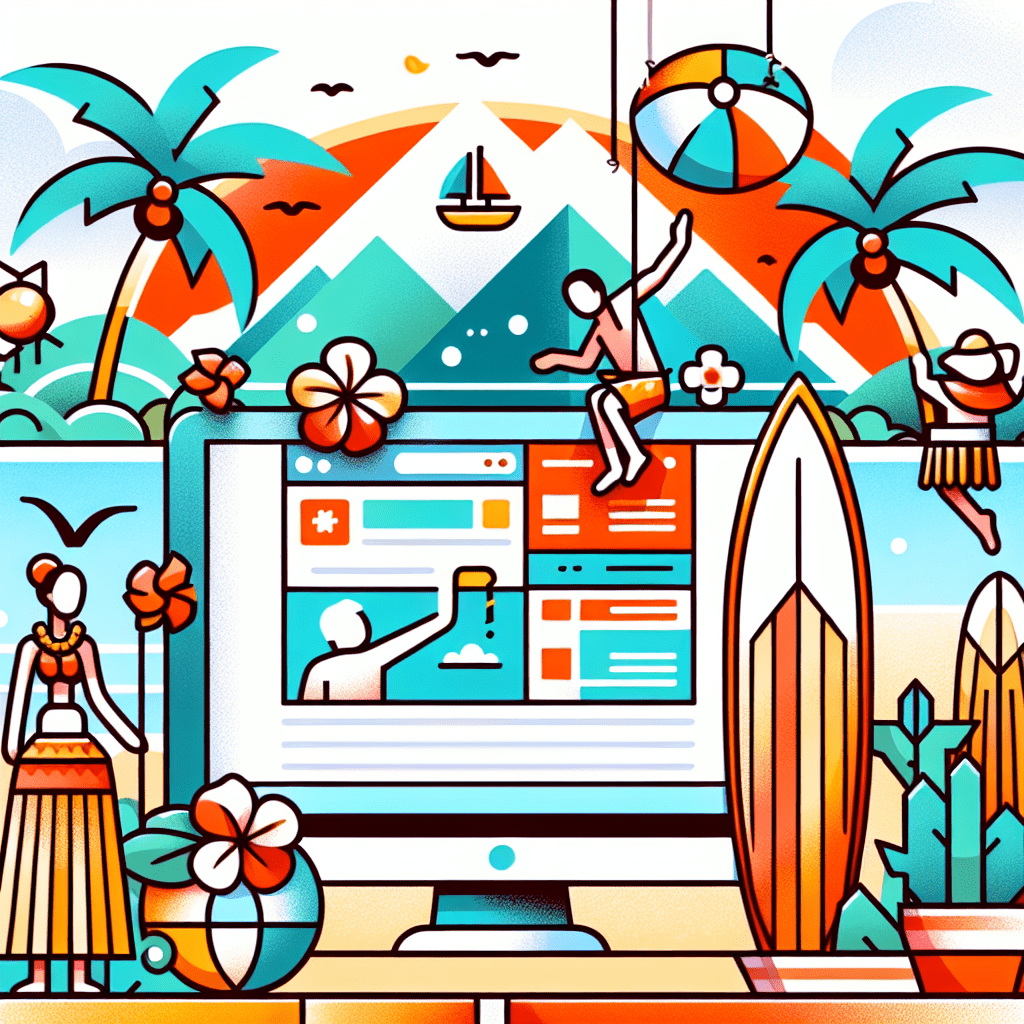Let’s be honest, getting noticed online in Honolulu isn’t just a matter of tossing a few hashtags on an Instagram post and calling it a day. It’s a little like trying to stand out at the beach during sunset; everyone’s looking, but only a few things really catch the eye. Add in the mix of tourists, locals, and that laid-back island vibe, and you’ve got a digital puzzle that’s trickier than it looks. But don’t worry, we’ve cracked it.
Here’s how to actually drive traffic to your site in Honolulu, without sounding like a pushy mainlander.
Start with Local SEO, Because Everyone’s Searching Nearby.
If your business isn’t showing up when someone types “best poke bowls near me” while standing on Kalākaua Avenue, you’re missing out. According to Google, nearly half of all searches have local intent. That means people want nearby, right now, and relevant.
For Honolulu, that means going hyper-specific. Think “surf lessons Waikīkī,” not just “surf lessons.” And don’t just stop at keywords. Claim your Google Business Profile, double-check your hours, upload photos that actually look like your place, and use schema markup so search engines know you’re legit.
Influencers: Smaller, Local, and Surprisingly
Effective.
Here’s the thing about influencer marketing in Honolulu; big names aren’t always better. The real traction often comes from
micro-influencers. These are folks with 5K to 50K followers who know the island, speak the language (literally and culturally), and have audiences who trust them.
Instead of chasing someone with a million followers in LA, find someone who reviews every new food truck in Kaimukī. Use tools like Upfluence, or just search Instagram with tags like #HonoluluEats or
#HawaiiLife. Then, collaborate on content that links back to your site. Blog posts, short videos, a TikTok where they actually use your product and show it in action. And yes, use UTM-tagged URLs so you can track the traffic.
Write Content That Locals and Tourists Actually Want to Read.
Tourism is a major traffic driver in Hawaii, but locals search too. So your content should serve both. A blog post like “Top 5 Hidden Beaches in Oʻahu” can bring in tourists planning their trip and locals looking for a weekend escape. The trick is to answer questions people are already Googling.
Use tools like Ahrefs or Google Search Console to spot low-competition keywords with high intent. Then, write posts that are genuinely helpful. “Where to Eat After Surfing Waikīkī” doesn’t just tell someone where to eat; it can lead them straight to your restaurant, or to your affiliate links if you’re in the biz of recommendations.
Geo-Targeted Ads: Because Not Everyone on Oʻahu Is the Same.
Running ads in Honolulu isn’t about blanketing the entire island with one generic message. You’ve got to get specific. Google Ads and Facebook Ads let you target by ZIP code, neighborhood, or even by people staying near Ala Moana Center.
So split your campaigns. One for locals looking for weekly deals, another for tourists searching for last-minute activities. Use radius targeting around hotels or tourist hotspots. And on Facebook, build different ad sets for different audiences: locals, Japanese tourists, military families, you name it.
Show Up at Local Events, Even If You’re a Digital Brand.
Honolulu has a strong community culture. People go to events, talk about them, and yes, they visit the sponsors’ websites. If you can get your business featured on the Honolulu Night Market website or linked from the Made in Hawaii
Festival page, that’s more than exposure; it’s a solid
backlink.
Sponsoring doesn’t always mean cash. You can offer services, donate products, or help with promotion in exchange for a link. And while you’re at it, get listed in local directories like Hawaii.com, GoHawaii.com, or Honolulu Magazine’s business listings. These aren’t just for tourists; they show up in search results, too.
Multilingual SEO: Speak Their Language, Literally.
Japanese and Korean tourists make up a big chunk of Hawaii’s international visitors. And guess what? They search in their own language. If your site only speaks English, you’re invisible to them.
Use hreflang tags to serve content in Japanese or Korean. But don’t rely on Google Translate; it’s fine for menus, not so great for marketing. Get professional translations for your key landing pages and most relevant blog posts. It’s an upfront investment, but it pays off when a Tokyo-based traveler books your tour weeks before they even land.
Source: Hawaii Tourism Authority
Facebook Groups and Reddit: Where Locals Actually Talk.
Honolulu’s online communities are surprisingly active. There are Facebook groups like “Honolulu Foodies” and “Oʻahu Small Business Support” where people share real recommendations. Reddit threads in r/Honolulu or r/Hawaii often turn into crowdsourced travel guides.
Join these groups, but don’t be annoying. Post helpful content, answer questions, and link only when it makes sense. Think: someone asks where to rent a surfboard, and you drop a link to your post “Best Surfboard Rentals Near Waikīkī.” That works. Dropping your homepage link out of nowhere? Not so much.
Mobile-First Isn’t Optional. It’s Survival.
Tourists don’t carry laptops to the beach. Locals scroll while waiting for their loco moco. Hawaii’s mobile usage is higher than the national average, and that means your site has to load fast and look good on a phone.
Run your site through Google’s Mobile-Friendly Test. Then, use PageSpeed Insights to find out what’s slowing things down. Compress your images. Fix layout shifts. And make sure your buttons are thumb-friendly. Because if your site takes longer than 3 seconds to load, your visitor is already off looking for malasadas somewhere else.
So, What’s the Big Picture?
Driving traffic in Honolulu isn’t only about SEO, ads, or content. It’s about understanding the island’s rhythm. Locals want relevance. Tourists want clarity. And everyone wants things to work on their phones.
Combine local SEO, smart influencer partnerships, geo-targeted ads, community involvement, and multilingual content. That’s how you get traffic that converts. The kind that turns into reservations, bookings, and real revenue.
You’re not just driving traffic. You’re building trust that shows up in your bottom line.
That’s the view from the ground.
We’ll be back soon with more real-world insights.
Until then, keep building.
– Perfect Sites Blog

